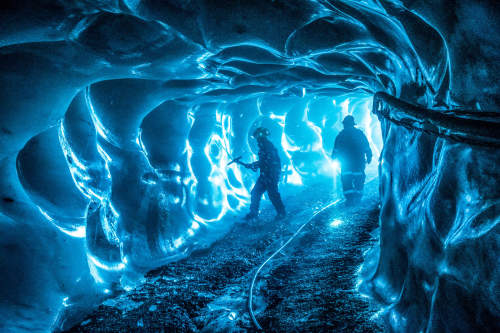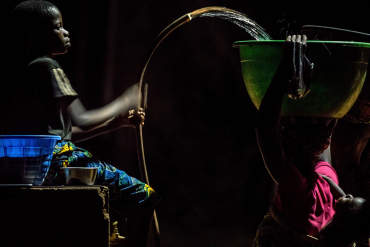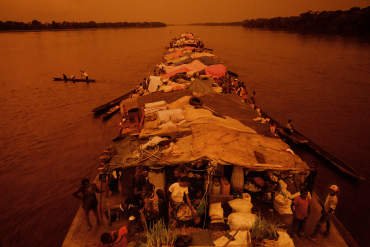Biography
French, b. 1955
Pascal Maitre was born in the village of Buzançais in the centre middle of France and studied psychology before starting his career in photojournalism in 1979 with the Jeune Afrique magazine. In 1984 he joined Gamma agency and in 1989 he co-founded the photo agency Odyssey Images.
Over the past four decades, Pascal has documented the life, politics, conflicts, traditions and the natural environment of over 40 countries across Africa. In 1985 he started to document Afghanistan through the troubled years of the Mujahideen fight against Soviet occupation to the internecine wars of the 1990s, the destruction of the Bamiyan Buddhas in 1996 and the campaigns of Ahmad Shah Massoud, the 'Lion of Panjshir'. He has also worked in Russia, the Middle East, Latin America and various other regions. Africa, however, remains the region he is most passionate about.
He has published numerous books, including In the Heart of Africa and Madagascar: Travels in a World Apart which gathers images from 15 years of working across the continent.
Over the years, Pascal has won innumerable awards for his photographic work including World Press Photo awards and the Visa d'or d'honneur/Figaro Magazine Award at the Visa pour l'Image photo festival in Perpignan, France.
He has exhibited in all over France - from Visa pour l'Image and the Maison Européenne de la Photography in France to the Naturhistorisches Museum in Vienna and the Geological Museum in Moscow.
His work has been published all over the world in magazines including GEO, Figaro, Newsweek, Life, Paris Match, National Geographic, The New York Times and many more.
Pascal lives southwest of Paris, France.
-
Featured Story
More than 620 million Africans, or two thirds of the population of the continent, have no access to electricity.
-
Featured Story
The Congo river is the lifeline of a region with few roads or railways.
For almost two years, the civil war in Sudan has been raging across the huge African country – from Khartoum and Omdurman, the twin capital cities on the Nile, to El Fasher in the eastern Darfur region and along the border with South Sudan.
Mumbai, India’s commercial capital, is a seething whirlpool of human activity that is bursting at the seams, struggling to sustain its 21 million inhabitants.
Convulsed by armed conflict and weakened by decades of instability, the East of the Democratic Republic of Congo (DRC) is facing a new and growing challenge – the rapid spread of monkeypox, or Mpox, an infectious viral disease that causes fever and blistering of the skin and can, in severe cases, be fatal.
From computers and mobile phones to cameras and printers, coltan is used in myriad electronic devices that are proliferating at an exponential rate across the world.
Near the western edge of the Bay of Naples, away from the famous ruins of Pompeii to the South, lies the town of Pozzuoli, a community of some 81,000 that has become popular with people seeking cheaper rents than in neighbouring Napoli.
The bright and opulent prints with their infinite variety of patterns have become the symbol of a continent, appreciated around the world in a virtuous circle of globalisation that connects Kinshasa and Accra to Paris and New York.
The Democratic Republic of Congo, four times the size of France with a population of 102 million, has long been a source of regional instability and the epitome of ungovernability.
The Osage Nation is a Native American tribe that formed around the Ohio Valley over two and half thousand years ago and migrated further south after suffering huge losses due to European diseases and frequent conflict with the Iroquois in the 17th and 18th centuries .
Cairo, Egypt’s capital, is a sprawling metropolis of over 22 million people that traces its roots back to the 7th century following the Arab conquests.
Every autumn the entire global population of monarch butterflies numbering hundreds of millions descends on a relatively small patch of volcanic mountains covered in pine forests near the town of Ocampo in the Mexican state of Michoacan.
The Spanish enclaves of Ceuta and Melilla on Morocco’s Mediterranean coast are a geographic anomaly and a throwback to Spain’s overseas territorial ambitions dating back to the 16th century.
Since Kabul fell to the Taliban in August 2015 the country has been rapidly sinking into one of the worst crises in its history.
Once more, the Islamic Republic of Iran and Western countries find themselves at an impasse.
The desert city of Agadez in central Niger, once infamous as an entrepot for migrants and refugees making their way north toward Libya and the dream of a new life in Europe, has now become the centre of a gold rush sweeping the Sahara.
In many ways, Morocco has charted a different course from its neighbours in the Maghreb.
The Mahafaly plateau in southeastern Madagascar is one of the driest regions in the country.
The Sahel divides the sands of the Sahara from the tropical forests of Africa, the mainly Arab North from sub-Saharan black African nations in the South, and nomadic pastoralists from sedentary agricultural communities.
Ivory Coast is uniquely dependent on cacao which accounts for 40% of national export income and is thought to be the main source of livelihood for around 6 million of the country’s 26 million inhabitants.
"I pointed out to the little prince that baobabs were not little bushes but, on the contrary, trees as big as castles; and that even if he took a whole herd of elephants away with him, the herd would not eat up one single baobab.
The shores of Lake Naivasha northeast of Kenya’s capital Nairobi, made famous by the film ‘Out of Africa’, are covered in swathes of greenhouses producing one of the country’s most valuable agricultural exports.
Kinshasa, a city of 10 million people known as Leopoldville during the colonial era after King Leopold II of the Belgians, stretches along the eastern banks of the Congo river for miles.
High up in the Peruvian Andes, way above the tree line, lies the city of La Rinconada, some 5,100 metres above sea level and thus the highest permanent human settlement in the world.
The leaves of the khat plant, native to the Horn of Africa and the Arabian Peninsula, are a popular stimulant in countries like Yemen, Somalia and Ethiopia and have been consumed for thousands of years, much like the coca leaf in South America.
More than 620 million Africans, or 2/3 of the population of the continent, have no access to electricity.
The river Congo is navigable for 1,700 kms from Kinshasa to Kisangani.

































